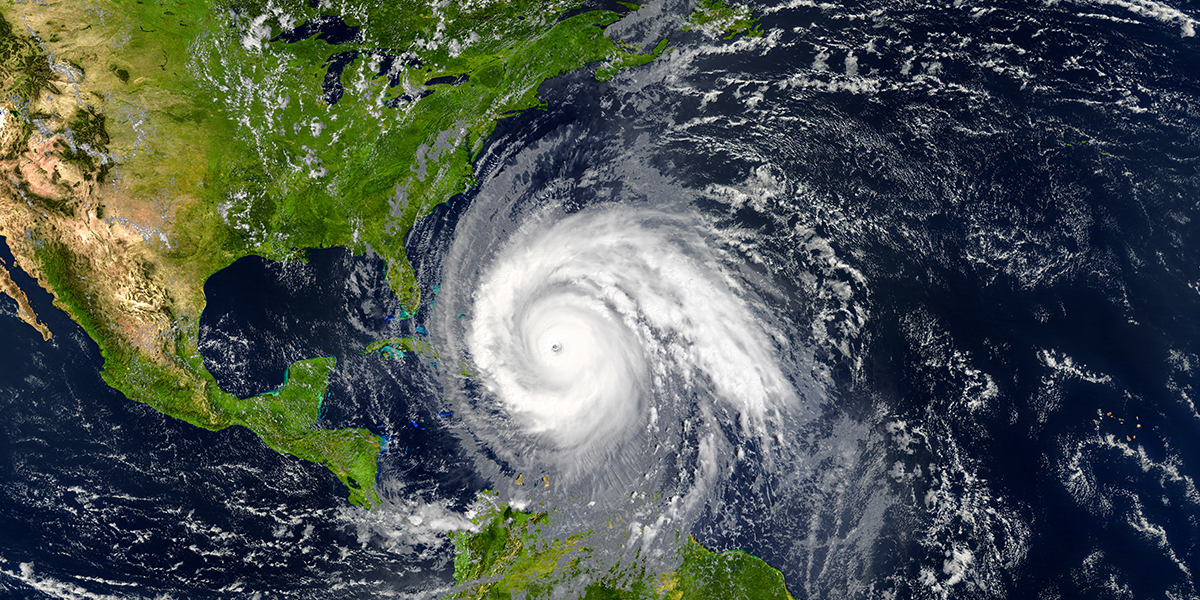New Study: Hurricane Harvey Impacted Colored Dissolved Organic Matter In Galveston Bay
Texas A&M Oceanography researchers have published new research results that show how large storms can impact colored dissolved organic matter in a subtropical estuary.
Sep 21, 2021

In a rare and opportunistic study, Texas A&M scientists analyzed colored dissolved organic matter in Galveston Bay over a 2-year period around the time of Hurricane Harvey’s landfall on Houston. The recently published study results show significant differences in colored dissolved organic matter (CDOM) between the wet and dry seasons and Hurricane Harvey. They also show differences between the San Jacinto and Trinity Rivers, the two major freshwater inputs to the bay.
In June 2017, Dr. Gerardo Gold Bouchot, Professor for Texas A&M’s Department of Oceanography, and his associates set out to study CDOM in Galveston Bay over the following two years. The landfall of Hurricane Harvey over Houston on August 25, 2017, during the study period, presented a rare opportunity to measure the impact of a large (category 4) hurricane on CDOM in the estuary.
“We had the heaviest rainfall hurricane in U.S. history and had a boat booked to go out three or four days after, so that was a good opportunity,” Gold Bouchot said. Because the hurricane deposited most of its water on the west side of the bay, more freshwater came from the San Jacinto River than the Trinity River, he explained.
Ordinarily, the Trinity River, on the east side, accounts for about 60-70 percent of freshwater input to Galveston Bay. After Harvey, there was a major influx of freshwater from the northwest through the San Jacinto and the study found a significant increase in CDOM from that source after the storm.
The study also found differences in data between wet and dry seasons. They even included samples from the San Jacinto near a chemical spill site from the ITC facilities. The authors emphasize important differences observed in 2018 between the San Jacinto and Trinity Rivers and their CDOM signatures, with the San Jacinto River showing a more urbanized signal.
“It was surprising that the system recovered very fast,” Gold Bouchot said. “Two-and-a-half months after Harvey, the system was back to normal in terms of colored dissolved organic matter.”
The study of CDOM is an important oceanographic tool. It is used to track primary production and geochemical carbon cycling, among many other applications. It was even used to track oil and how it changed in the water column after the Deepwater Horizon oil spill.
Among the coauthors of this study was Texas A&M Oceanography professor, Dr. Daniel Thornton who specializes in Biological Oceanography, specifically phytoplankton, biogeochemistry, and aerosols. Thornton helped design the study and contributed to the manuscript.
Three undergraduate students that Gold Bouchot mentored for Texas A&M Oceanography’s Research Exposure for Undergraduates (REU) program also contributed to the project. Sam Polis, a former oceanography student and now high school science teacher, contributed to a portion of the data analysis on this study, particularly the PARAFAC analysis.
“The multi-variate nature of our research and data analysis impressed me,” Polis said. “We ran a PARAFAC (parallel factor) analysis which was an advanced multi-variate analysis that pulls out the components of CDOM throughout the dataset.”
In addition to funding from the Texas A&M University “T3 Triads for Success” grant, the undergraduate students benefited from a fellowship from the NSF funded REU “Observing the Ocean” program at the Department of Oceanography of Texas A&M.
“I found the oceanography department to be a really enjoyable place to do research,” Polis said. “I felt really mentored by the department.”
By Justin Agan '18

